Abstract
The most heat-sensitive functions of chloroplasts in Spinacia oleracea L. including the stromal carboxylation reaction, the light-induced electrical field gradient across the thylakoid membrane, as well as the overall photosynthetic CO2 fixation were less affected by heat if chloroplasts were heated in the light: 50% inactivation occurred around 35°C in the dark and around 40°C in the light. Relative low light intensities were sufficient to obtain optimal protection against heat. In contrast, the light-induced ΔpH across the thylakoid membrane, the photophosphorylation, and the photochemical activity of photosystem II which were less sensitive to heat in the dark (50% inactivation above 40°C) were not protected by light. Photosystem II even was destabilized somewhat by light.
The effect of light on the heat sensitivity of the water-splitting reaction was dependent on the pH in the medium. Protection by light only occurred at alkaline pH, in which case heat sensitivity was high (50% inactivation at 33°C in the dark and at 38°C in the light). Protection was prevented by uncouplers. At pH 6.8 when the heat sensitivity was low in any case (50% inactivation at 41°C in the dark), light had no further protecting effect.
Protection by light has been discussed in terms of light-induced transport of protons from the stroma to the thylakoid space and related ion fluxes.
Full text
PDF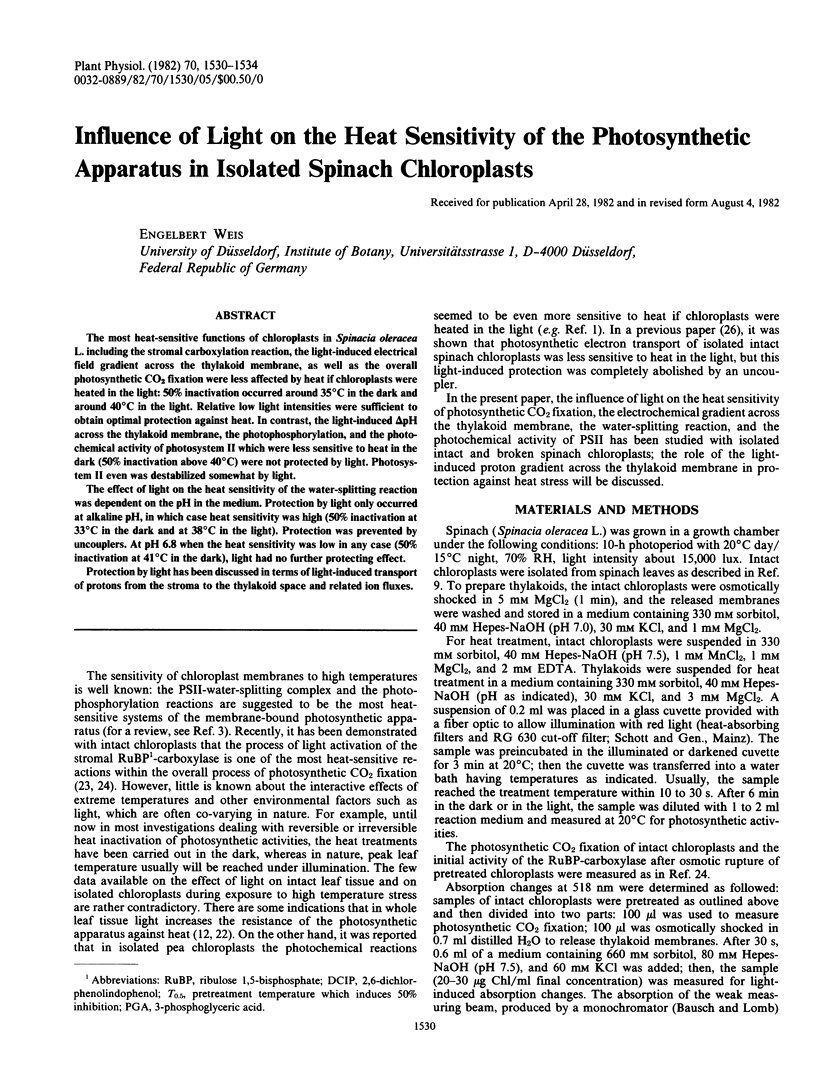
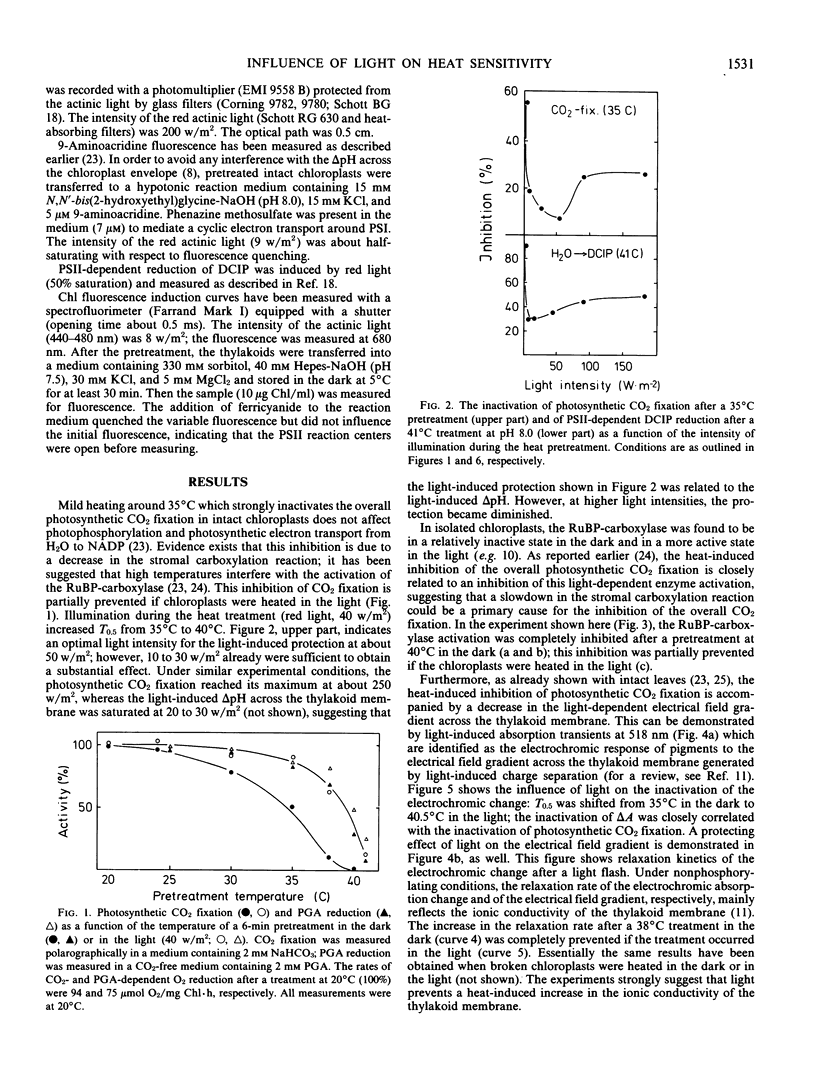
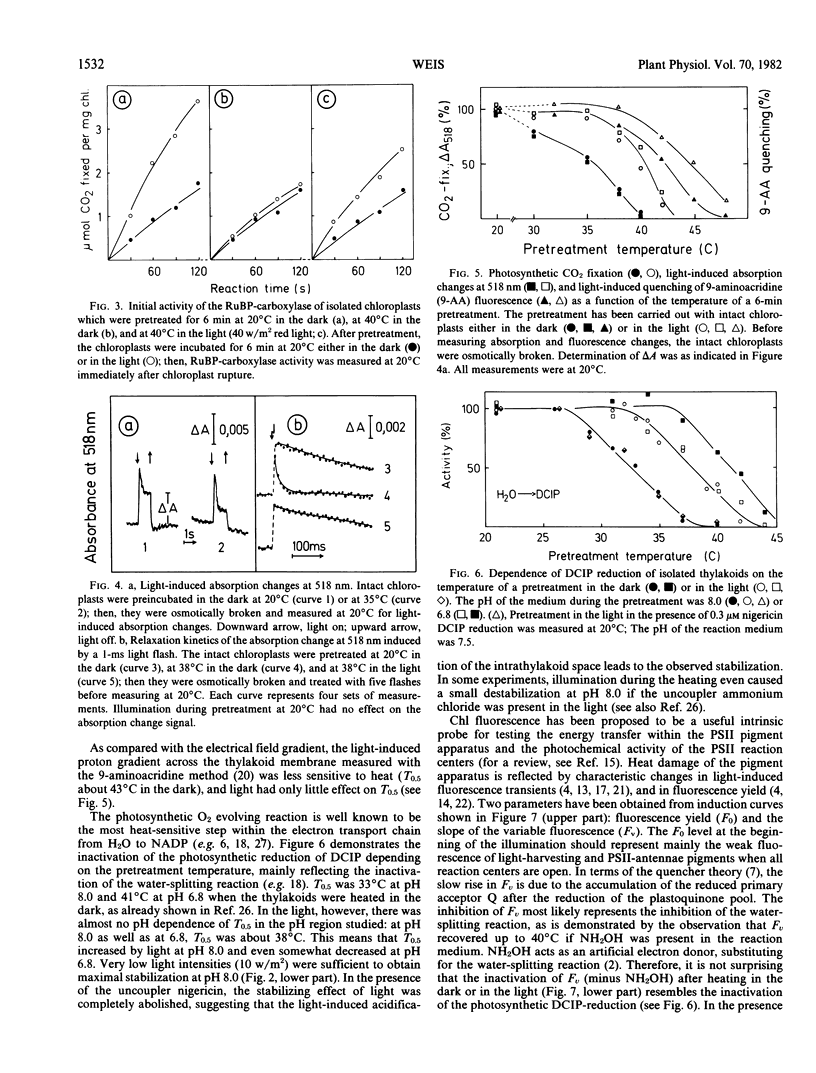
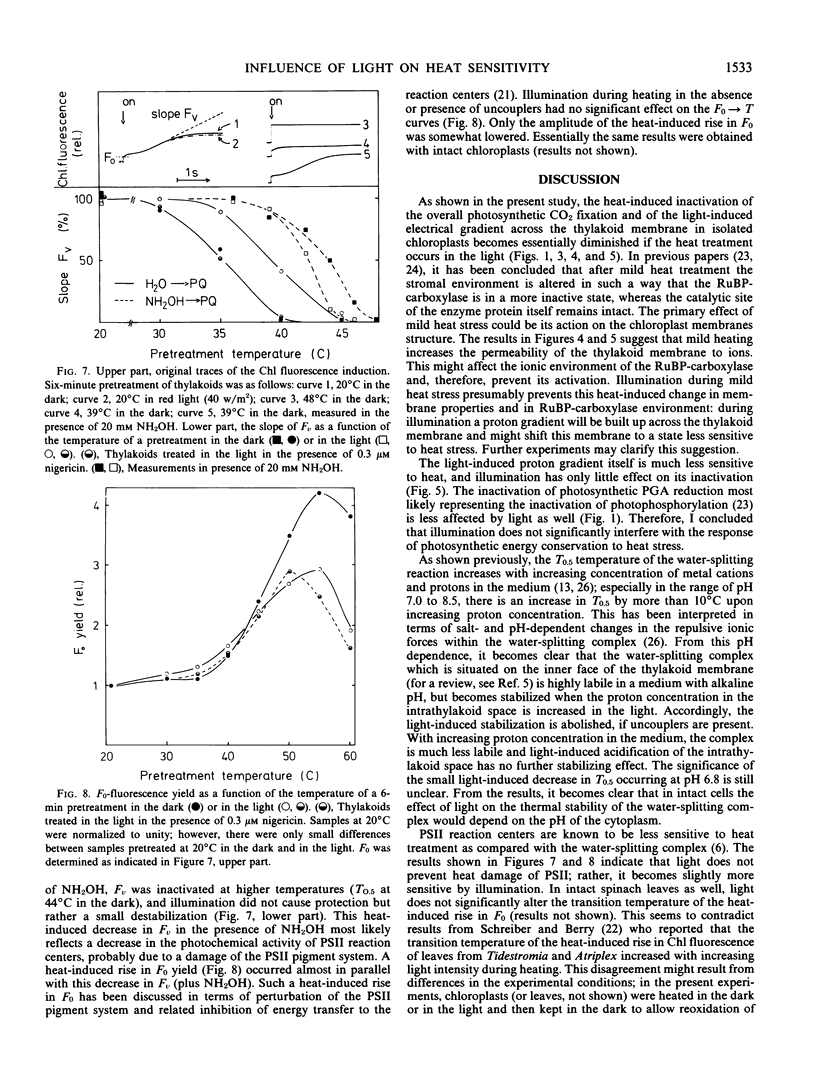
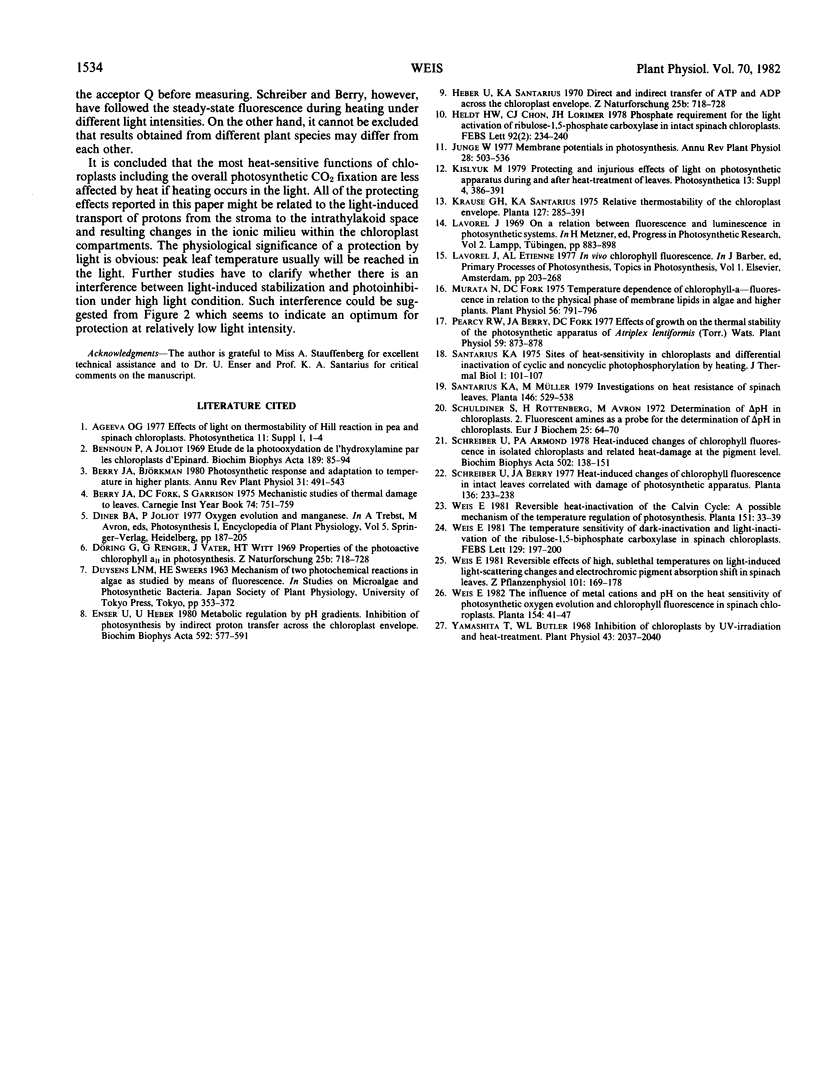
Selected References
These references are in PubMed. This may not be the complete list of references from this article.
- Bennoun P., Joliot A. Etude de la photooxydation de l'hydroxylamine par les chloroplastes d'epinards. Biochim Biophys Acta. 1969 Sep 16;189(1):85–94. doi: 10.1016/0005-2728(69)90229-1. [DOI] [PubMed] [Google Scholar]
- Enser U., Heber U. Metabolic regulation by pH gradients. Inhibition of photosynthesis by indirect proton transfer across the chloroplast envelope. Biochim Biophys Acta. 1980 Oct 3;592(3):577–591. doi: 10.1016/0005-2728(80)90102-4. [DOI] [PubMed] [Google Scholar]
- Heber U., Santarius K. A. Direct and indirect transfer of ATP and ADP across the chloroplast envelope. Z Naturforsch B. 1970 Jul;25(7):718–728. doi: 10.1515/znb-1970-0714. [DOI] [PubMed] [Google Scholar]
- Murata N. Temperature dependence of chlorophyll a fluorescence in relation to the physical phase of membrane lipids algae and higher plants. Plant Physiol. 1975 Dec;56(6):791–796. doi: 10.1104/pp.56.6.791. [DOI] [PMC free article] [PubMed] [Google Scholar]
- Pearcy R. W. Effects of Growth Temperature on the Thermal Stability of the Photosynthetic Apparatus of Atriplex lentiformis (Torr.) Wats. Plant Physiol. 1977 May;59(5):873–878. doi: 10.1104/pp.59.5.873. [DOI] [PMC free article] [PubMed] [Google Scholar]
- Schreiber U., Armond P. A. Heat-induced changes of chlorophyll fluorescence in isolated chloroplasts and related heat-damage at the pigment level. Biochim Biophys Acta. 1978 Apr 11;502(1):138–151. doi: 10.1016/0005-2728(78)90138-x. [DOI] [PubMed] [Google Scholar]
- Schuldiner S., Rottenberg H., Avron M. Determination of pH in chloroplasts. 2. Fluorescent amines as a probe for the determination of pH in chloroplasts. Eur J Biochem. 1972 Jan 31;25(1):64–70. doi: 10.1111/j.1432-1033.1972.tb01667.x. [DOI] [PubMed] [Google Scholar]
- Yamashita T., Butler W. L. Inhibition of chloroplasts by UV-irradiation and heat-treatment. Plant Physiol. 1968 Dec;43(12):2037–2040. doi: 10.1104/pp.43.12.2037. [DOI] [PMC free article] [PubMed] [Google Scholar]


